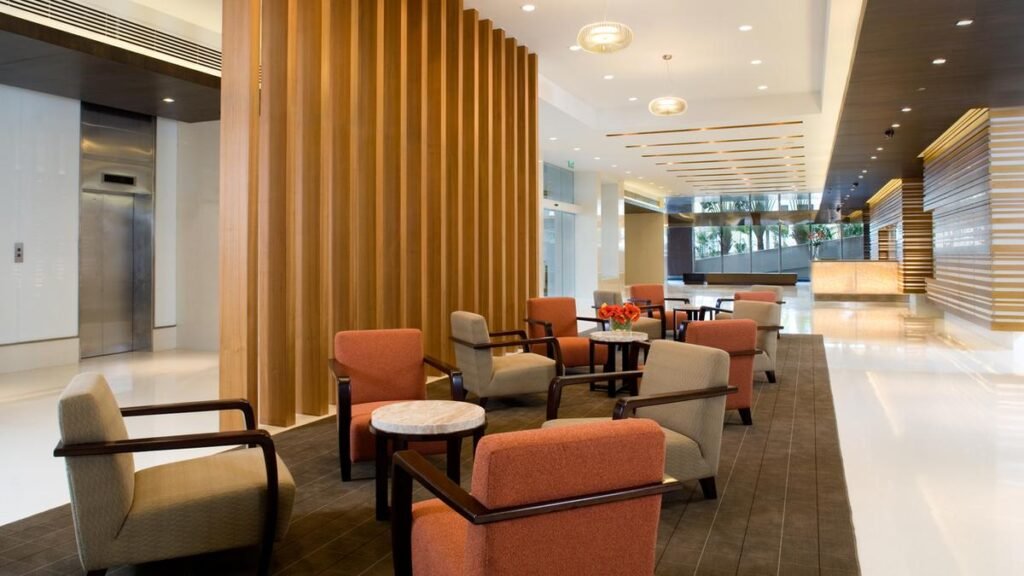Economically, this model benefits both developers and tenants.
| Photo Credit: Getty Images
Coworking locations are increasingly being integrated into residential townships, blurring the lines between work and living. This type of real estate proliferation represents a paradigm shift in urban development, driven by sustained demand for remote and hybrid work. A large percentage of the workforce has adopted fully remote work, at least part-time. In response, the residential sector has begun incorporating professional-level workplace infrastructure into apartment buildings and exurbs, offering amenities that support a live-work lifestyle without the burden of commuting.
Suburbs leading the charge
This blurring of work and living spaces is particularly visible in the rapid expansion of shareable workspaces in suburban areas. In recent years, coworking hubs have been developing in suburbs at a pace that rivals — and sometimes exceeds — the growth seen in urban cores. In many cities, residential suburbs now host the highest concentration of shared workspaces, catering to professionals seeking to avoid traffic and transit while still accessing robust professional infrastructure.
Luxury residential projects in India’s major cities — Bengaluru, Delhi, Gurugram, Pune, and Mumbai — are increasingly featuring coworking lounges equipped with high-speed internet, meeting rooms, and coffee bars. Once the domain of premium office spaces, these amenities are now a key selling point for upscale apartment complexes targeting remote professionals, entrepreneurs, and hybrid workers. Developers actively promote these features to appeal to young professionals who value the convenience of a formal work environment just steps from home.
From workspace to community space
Beyond convenience, coworking spaces also foster community. In residential settings, shared workspaces act as social hubs, transforming a building full of individuals into a networked community of neighbours. Numerous studies have shown that most workers feel less isolated and significantly happier in coworking environments. This is largely due to organic networking, collaborative opportunities, and curated events such as workshops and social mixers. Some developments are even designing multifunctional spaces with convertible furniture and thoughtful acoustics, balancing productivity with adaptability. These spaces acknowledge the modern resident’s desire to focus on professional demands while also seeking the social engagement their living environment can provide.
Economically, this model benefits both developers and tenants. Developers and investors see higher returns than traditional rentals, thanks to the added value of all-inclusive amenities and high occupancy rates driven by demand. Residents, in turn, enjoy high-end features — such as meeting rooms, podcast studios, and ergonomic furniture — without the cost of maintaining a private office. Flexible membership structures, similar to gym subscriptions, allow users to access the space based on their needs — whether that’s drop-in usage or a dedicated desk — making premium workspace access both practical and affordable.
Integrated living
Looking ahead, this alignment may reshape the very design of our urban and suburban landscapes. As the global coworking market continues to expand, its influence on residential planning will deepen. We can expect future townships to include co-designed living and working spaces, enhanced with technology and wellness-focused features such as meditation pods or childcare facilities. This goes beyond convenience or eliminating commutes — it reimagines community itself. It’s about enabling lifestyles where professional ambition and personal well-being coexist seamlessly, reshaping how we inhabit space.
The writer is Founder & CEO, Enzyme Office Spaces.
Published – July 26, 2025 12:37 pm IST

